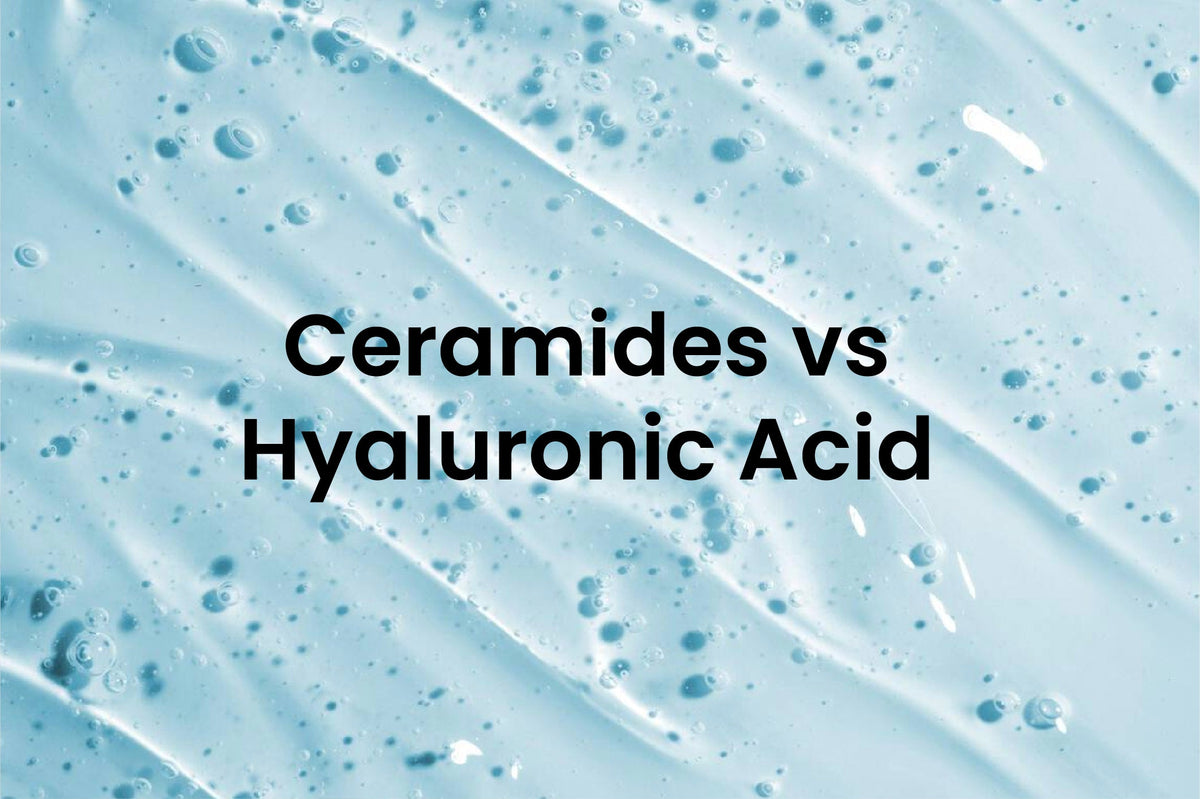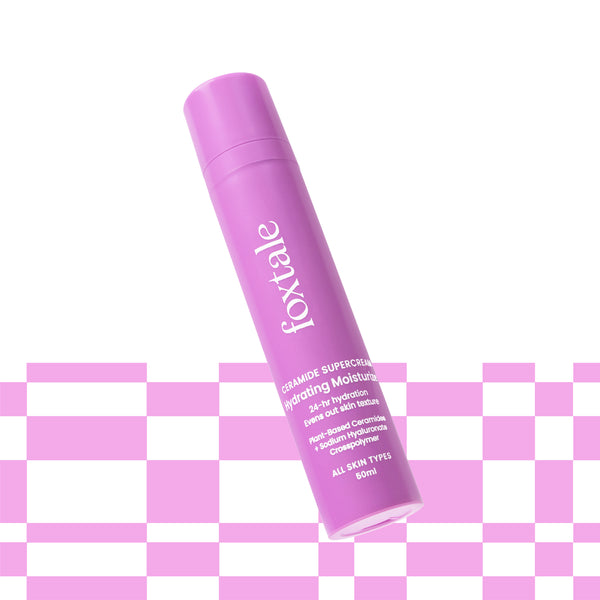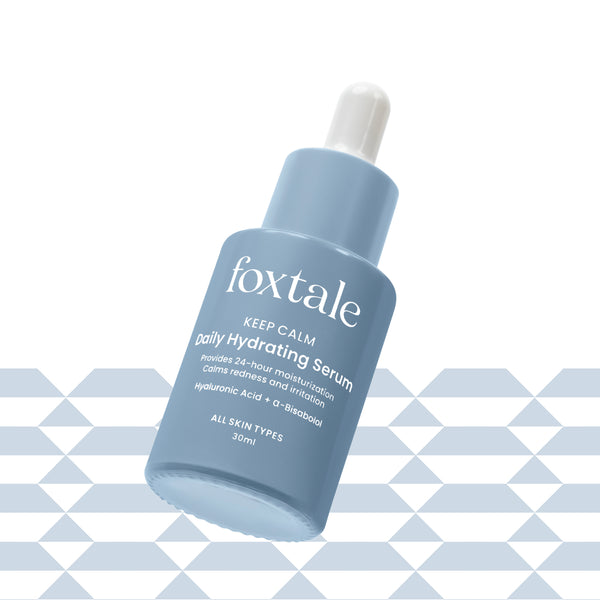
Skincare conversations often circle back to two powerhouse ingredients: ceramides and hyaluronic acid. Both have earned a permanent place in moisturizers and serums, but they aren’t interchangeable. Hyaluronic acid for face hydration pulls in water, while Ceramides strengthen the barrier, limiting moisture loss.
If you’ve ever wondered whether to pick one over the other, or whether you should be using both, this guide clears it up with a side-by-side breakdown, usage tips, and answers to common questions.
What are Ceramides?
Ceramides are natural lipids that make up more than half of your skin barrier. Imagine your skin cells as bricks; Ceramides are the mortar that holds them together. Without enough mortar, the wall weakens and water slips out. That’s exactly what happens when Ceramide levels drop.
- Barrier protection: Ceramides rebuild and strengthen the outer layer of skin, keeping environmental irritants from sneaking in.
- Moisture retention: By sealing the barrier, they slow down transepidermal water loss, so hydration stays where it belongs.
- Comfort for sensitive skin: If you deal with dryness, redness, or eczema, Ceramides help calm reactivity and restore balance.
For people with eczema or chronic dryness, dermatologists often recommend creams rich in Ceramides. But even if your skin isn’t reactive, you still benefit. Overuse of actives, harsh cleansers, or seasonal weather shifts can chip away at your barrier. That’s when a Ceramide moisturizer makes a difference because it works on rebuilding the foundation of your skin.
What is Hyaluronic Acid?
Hyaluronic Acid, on the other hand, is all about hydration. It’s a sugar molecule that occurs naturally in the body, especially in skin, joints, and eyes. Its strength lies in binding water—up to 1,000 times its own weight.
Here’s why that matters for your skin:
- Hydration boost: It draws moisture into the top layers, leaving skin plump and supple.
- Smoothing effect: Dehydration makes fine lines look deeper. Hyaluronic acid fills them out temporarily, giving a smoother surface.
- Universal use: From oily to dry skin, everyone can benefit from its water-holding ability.
With age, Hyaluronic Acid levels decline. That’s when skin starts to lose bounce and elasticity. Using a Hyaluronic Acid serum helps restore hydration directly where it’s needed. For those with tightness, dullness, or dehydration lines, Hyaluronic Acid for dry skin brings fast relief.
Ceramides vs Hyaluronic Acid: Key Differences
While both contribute to hydration, they do it in different ways. Think of Ceramides as the seal and Hyaluronic Acid as the sponge.
|
Aspect |
Ceramides |
Hyaluronic Acid |
|
Main Function |
Restore and strengthen skin barrier |
Attract and hold water in skin |
|
How It Works |
Replaces lost lipids between cells |
Binds moisture molecules to skin cells |
|
Primary Benefit |
Prevents moisture loss, repairs sensitivity |
Hydrates, plumps, and smooths |
|
Best For |
Barrier damage, eczema, dryness, sensitivity |
Dehydration, dullness, fine lines |
|
Skin Type Compatibility |
Especially helpful for dry, sensitive, aging |
Safe for all types, including oily/acne-prone |
|
Absorption |
Works in the upper barrier layers |
Penetrates various depths depending on molecule size |
|
Long-Term Effects |
Stronger barrier, less reactivity |
Maintains hydration, preserves elasticity |
Can Hyaluronic Acid and Ceramides Be Used Together?
Absolutely. In fact, using both of them together works better than choosing one out of them. Hyaluronic Acid pulls water into the skin, and Ceramides lock it in by sealing the barrier. This duo covers both sides of the hydration equation.
Here’s how to make it work in your routine:
1. Layer smartly. Apply your Hyaluronic Acid serum on damp skin right after cleansing.
2. Seal it in. Follow with a Ceramide moisturizer to trap that water and rebuild your barrier.
3. Pair with other actives. In the morning, you can combine Hyaluronic Acid with Vitamin C, then use Ceramides to reduce potential irritation. At night, Ceramides are especially useful after exfoliants or retinoids.
Next time you build your routine, think about combining them rather than treating them as competitors.
Which is Better: Hyaluronic Acid or Ceramides?
This depends on your skin’s priorities.
- If hydration is the goal: Hyaluronic Acid delivers quick plumping and smoothing. It’s the right call if your main issue is dehydration.
- If sensitivity or barrier weakness is the problem: Ceramides repair the foundation. They’re essential for anyone with eczema, irritation, or chronic dryness.
- For most people: A mix works best. Hyaluronic Acid provides the immediate hydration, while Ceramides ensure it doesn’t slip away.
Still, if you had to pick only one, go with the ingredient that solves your most pressing concern. Aging, sensitive, or compromised skin usually benefits most from Ceramides. Dehydrated, lackluster skin often responds quickly to Hyaluronic Acid.
Conclusion
Ceramides and Hyaluronic Acid serve different but complementary roles. Hyaluronic Acid hydrates from within, while Ceramides protect from the outside.
Instead of viewing it as Ceramides vs Hyaluronic Acid, think about using them as partners. Start with a Hyaluronic Acid serum to draw water into your skin. Then seal the deal with a Ceramide moisturizer to keep your barrier strong. That way, you get hydration that lasts and a barrier that stays resilient.
FAQs
What not to pair with Ceramides?
Ceramides are stable and blend well with most ingredients. The only caution is to avoid over-exfoliating with strong acids or harsh scrubs that undo the barrier repair you’re aiming for.
Can I use Ceramide every day?
Yes. Daily use is encouraged because it steadily strengthens your barrier.
What is Hyaluronic Acid best paired with?
It combines well with Niacinamide, Peptides, and Vitamin C. Together they target multiple concerns while Hyaluronic Acid keeps hydration levels high.
Should I use Hyaluronic Acid in the morning or night?
Both. In the morning, Hyaluronic Acid preps skin to stay hydrated under sunscreen. At night, it works well under richer creams to replenish while you sleep.





